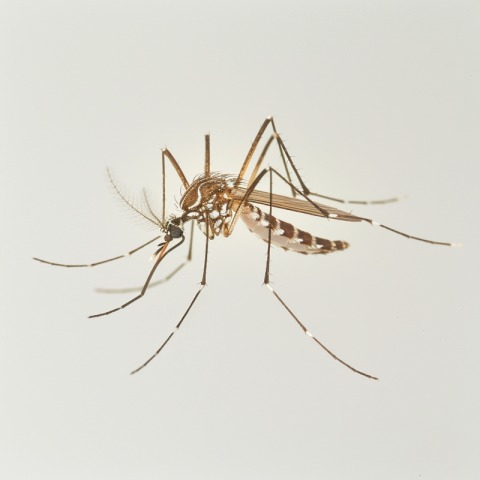

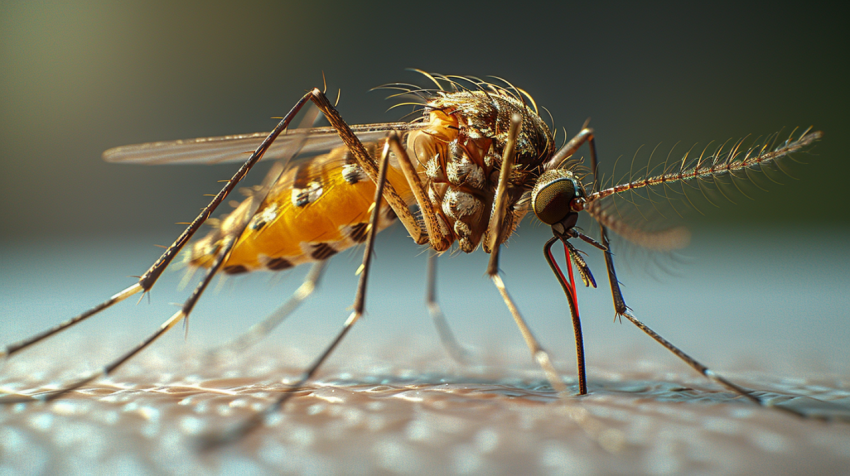


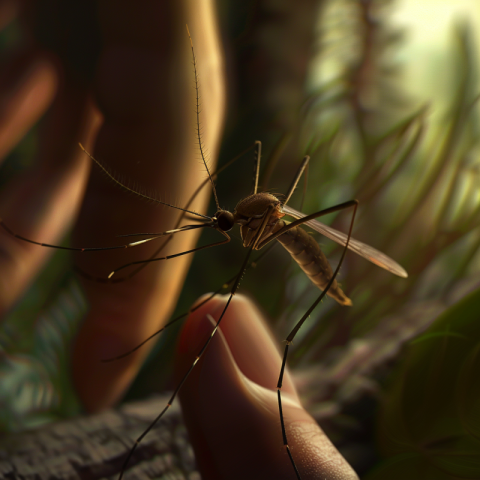
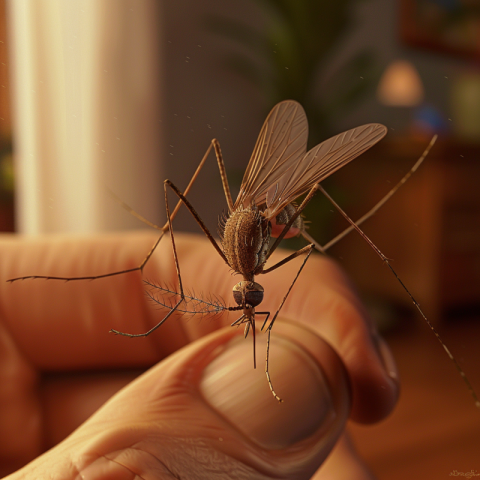
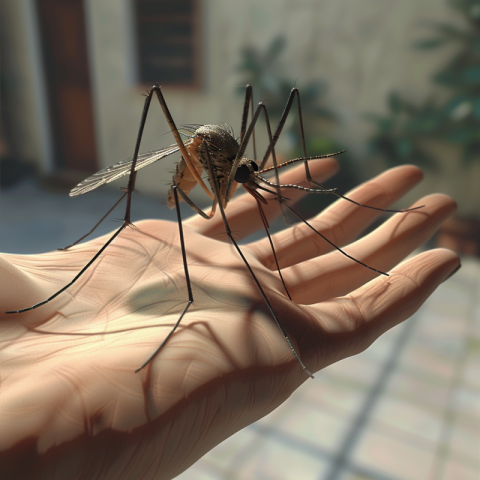

Mosquitoes: Disease Vectors and Masters of Adaptation - Biology & Control
Mosquitoes are a family of small, midge-like flies (Culicidae) known for their ability to transmit some of the world's most devastating diseases. While not all mosquito species bite humans or spread diseases, those that do pose a significant threat to public health. Understanding mosquito biology, behavior, and the diseases they transmit is crucial for developing effective control strategies. This exploration delves into the world of mosquitoes, covering their life cycle, feeding habits, role as disease vectors, and methods for controlling their populations.
1. Mosquito Biology and Anatomy:
- Slender Body: Mosquitoes have a slender body with long legs and a long, thin proboscis.
- One Pair of Wings: Like all true flies, mosquitoes have one pair of wings.
- Scales: Mosquito wings and bodies are covered in tiny scales.
- Proboscis: A long, needle-like mouthpart used for piercing skin and sucking blood (in females).
- Antennae: Feathery antennae, especially prominent in males, are used to detect the carbon dioxide and other scents that help them locate hosts.
2. Mosquito Life Cycle (Complete Metamorphosis):
Mosquitoes undergo complete metamorphosis, with four distinct stages:
- Egg: Female mosquitoes lay their eggs in water or in locations that will later become flooded. Some species lay eggs singly, while others lay them in rafts.
- Larva ("Wiggler"): Mosquito larvae are aquatic and breathe through a siphon tube at the water's surface. They feed on microorganisms and organic matter in the water.
- Pupa ("Tumbler"): The pupa is also aquatic but does not feed. It breathes through two small tubes called "trumpets." Metamorphosis into the adult form takes place within the pupal case.
- Adult: The adult mosquito emerges from the pupal case at the water's surface.
3. Diversity of Mosquito Species:
There are over 3,500 known mosquito species worldwide, but only a few genera are significant vectors of human diseases:
- Anopheles: Vectors of malaria.
- Aedes: Vectors of dengue fever, Zika virus, yellow fever, and chikungunya.
- Culex: Vectors of West Nile virus, Japanese encephalitis, and lymphatic filariasis.
4. Mosquito Behavior:
- Blood-Feeding: Only female mosquitoes feed on blood, which they need to produce eggs. Males feed on nectar and other plant juices.
- Host Location: Female mosquitoes are attracted to hosts by a combination of factors, including carbon dioxide, body heat, sweat, and certain scents.
- Mating: Mosquitoes often mate in swarms.
5. Mosquito Diet and Feeding:
- Females: Require a blood meal to develop their eggs. They pierce the skin of their host using their proboscis and inject saliva that contains anticoagulants to prevent blood clotting.
- Males: Feed on nectar, plant sap, and other sugar sources for energy.
- Larvae: Filter feeders in aquatic environments. They consume algae, bacteria, and other organic matter.
6. Mosquitoes as Disease Vectors:
Mosquitoes are among the deadliest animals on Earth due to their ability to transmit diseases:
- Malaria: Caused by Plasmodium parasites and transmitted by Anopheles mosquitoes.
- Dengue Fever: Caused by the dengue virus and transmitted by Aedes mosquitoes.
- Zika Virus: Transmitted by Aedes mosquitoes, Zika virus can cause birth defects.
- Yellow Fever: Caused by the yellow fever virus and transmitted by Aedes and Haemagogus mosquitoes.
- West Nile Virus: Transmitted by Culex mosquitoes, West Nile virus can cause encephalitis and meningitis.
- Chikungunya: Caused by the chikungunya virus and transmitted by Aedes mosquitoes.
- Lymphatic Filariasis: Caused by parasitic worms and transmitted by various mosquito species, including Culex, Anopheles, and Aedes.
7. Mosquito-Borne Disease Transmission:
Mosquitoes transmit diseases when they bite an infected host and then bite a susceptible host. The pathogens (viruses, parasites, or worms) are transferred from the mosquito's salivary glands to the bloodstream of the new host.
8. Mosquito Control:
Controlling mosquito populations is crucial for reducing the incidence of mosquito-borne diseases. Methods include:
- Source Reduction: Eliminating or treating standing water where mosquitoes breed (e.g., emptying containers, covering water storage tanks).
- Larviciding: Applying insecticides to water sources to kill mosquito larvae.
- Adulticiding: Using insecticides to kill adult mosquitoes (e.g., fogging, spraying).
- Biological Control: Introducing natural predators of mosquitoes, such as larvivorous fish (e.g., Gambusia), to breeding sites.
- Personal Protection: Using insect repellent, wearing long sleeves and pants, and sleeping under mosquito nets.
- Genetic Control: Releasing genetically modified mosquitoes that are sterile or less able to transmit diseases.
- Traps: Devices that attract and capture adult mosquitoes, often using carbon dioxide or other attractants.
- Environmental Management: Modifying habitats to make them less suitable for mosquito breeding.
9. Studying Mosquitoes (Culicidology):
The scientific study of mosquitoes is a branch of entomology, often referred to as culicidology. Scientists who specialize in mosquitoes are called culicidologists. Mosquito research is essential for understanding disease transmission, developing new control strategies, and protecting public health.
Conclusion:
Mosquitoes are more than just a nuisance; they are vectors of some of the world's most dangerous diseases. Understanding their biology, behavior, and the diseases they transmit is vital for developing and implementing effective control measures. By combining various approaches, from source reduction to personal protection, we can reduce the burden of mosquito-borne illnesses and improve global health.
Mosquito life cycle, mosquito-borne diseases, malaria, dengue fever, Zika virus, yellow fever, West Nile virus, chikungunya, lymphatic filariasis, Anopheles, Aedes, Culex, mosquito control, source reduction, larviciding, adulticiding, biological control, insect repellent, mosquito nets, genetically modified mosquitoes, disease vector, blood-feeding, mosquito bite, mosquito larvae, mosquito pupa, culicidae, culicidology, public health, insecticide resistance, integrated vector management (IVM), Wolbachia, sterile insect technique (SIT), attract and kill, spatial repellents, mosquito surveillance, disease surveillance.

